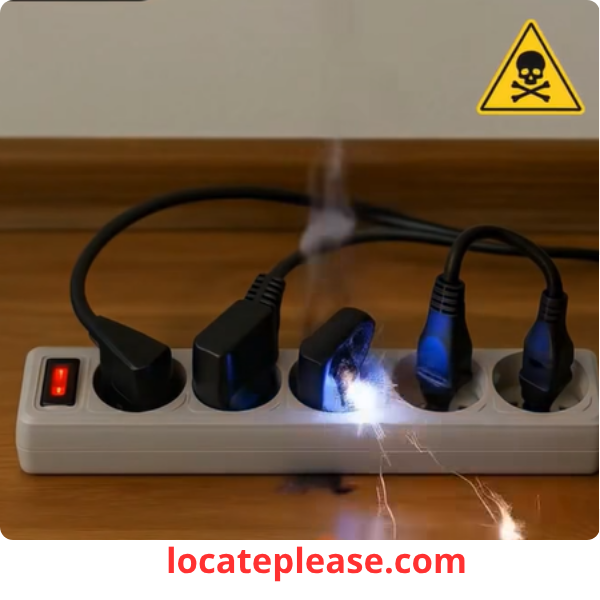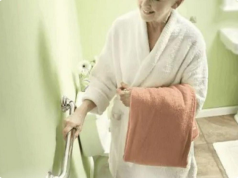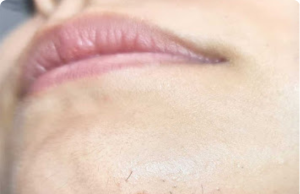In today’s world, our homes are filled with gadgets — laptops, phone chargers, TVs, gaming consoles, coffee makers, and more. With so many devices competing for limited wall outlets, the humble power strip (also known as a surge protector or “alargue” in Argentina) has become a household essential.
It’s convenient. It’s affordable.
But here’s the truth:
👉 Using a power strip incorrectly can be dangerous — even deadly.
While power strips are incredibly useful, they are not designed to handle the power demands of every appliance. Misuse can lead to overheating, electrical fires, and costly damage to your devices — or worse, your home.
In fact, electrical issues cause nearly 30% of home fires, and overloaded power strips are a leading culprit.
Let’s break down the risks — and which appliances should never be plugged into a power strip.
How Power Strips Work — And Where They Fall Short
A power strip is essentially an extension of your wall outlet, allowing you to plug in multiple devices at once. Many come with:
- Circuit breakers
- Surge protection
- On/off switches
But here’s the catch:
Every power strip has a maximum power capacity, usually listed in watts (W) or amperes (A).
Most standard strips handle up to 1,800–2,000 watts — but many appliances exceed this limit, especially when used together.
When you plug in too many high-wattage devices, the strip can:
- Overheat
- Melt
- Spark
- Catch fire
And because power strips are often tucked behind furniture, under rugs, or near curtains, a fire can start unnoticed.
Appliances That Should NEVER Be Plugged Into a Power Strip
These devices draw too much power and should always be plugged directly into a wall outlet:
🔥 1. Space Heaters
- Power draw: 750–1,500 watts (or more)
- Risk: One space heater can max out a power strip. Overheating is almost guaranteed.
- ❌ Never use with a power strip or extension cord.
🔥 2. Air Conditioners (Portable or Window Units)
- Power draw: 1,000–1,800+ watts
- Risk: High startup surge can trip circuits or melt plastic.
- ❌ Plug directly into the wall.
🔥 3. Microwaves
- Power draw: 600–1,500 watts
- Risk: High energy use during operation, especially when combined with other devices.
- ❌ Avoid sharing a strip with other kitchen appliances.
🔥 4. Refrigerators & Freezers
- Power draw: 150–800 watts (but spikes when compressor kicks in)
- Risk: Power strips can fail during startup surges, causing food spoilage or fire.
- ❌ Plug into a dedicated outlet.
🔥 5. Hair Dryers, Curling Irons, and Flat Irons
- Power draw: 1,000–1,800 watts
- Risk: High heat + high power = dangerous combo.
- ❌ Never plug into a power strip, especially in bathrooms.
🔥 6. Coffee Makers, Toasters, and Kettles
- Power draw: 800–1,500 watts
- Risk: Multiple kitchen appliances on one strip can overload it fast.
- ❌ Plug high-wattage kitchen devices directly into the wall.
Signs Your Power Strip Is Overloaded or Unsafe
Watch for these red flags:
- The strip feels hot to the touch
- The plastic is discolored or warped
- The circuit breaker keeps tripping
- Devices flicker or shut off
- A burning smell near the strip
If you notice any of these, unplug it immediately.
How to Use Power Strips Safely
✅ Check the wattage rating — Never exceed the strip’s maximum capacity.
✅ Plug high-wattage appliances directly into the wall — No exceptions.
✅ Avoid daisy-chaining — Never plug one power strip into another.
✅ Keep it visible and ventilated — No hiding under rugs or behind furniture.
✅ Don’t cover it with fabric or curtains — Heat needs to escape.
✅ Replace old or damaged strips — Frayed cords or cracked casings are fire hazards.
✅ Use surge protectors for electronics — TVs, computers, and gaming consoles need protection from power surges.
When to Use a Power Strip — And When Not To
✔️ Safe for:
- Phone/laptop chargers
- Lamps
- TVs and entertainment systems (on a surge-protected strip)
- Printers and small electronics
❌ Never use for:
- Heating/cooling appliances
- Kitchen countertop appliances
- Anything that generates heat or uses a motor
Final Thoughts: Convenience Should Never Cost Your Safety
Power strips are a modern necessity — but they’re not magic.
They’re electrical tools with limits.
By understanding those limits and respecting them, you can protect your home, your family, and your devices.
So next time you reach for that power strip, ask yourself:
“Am I making life easier — or risking a fire?”
Because the few seconds it takes to plug an appliance directly into the wall could save your home.
Stay safe. Stay aware. And never overload your outlets.










